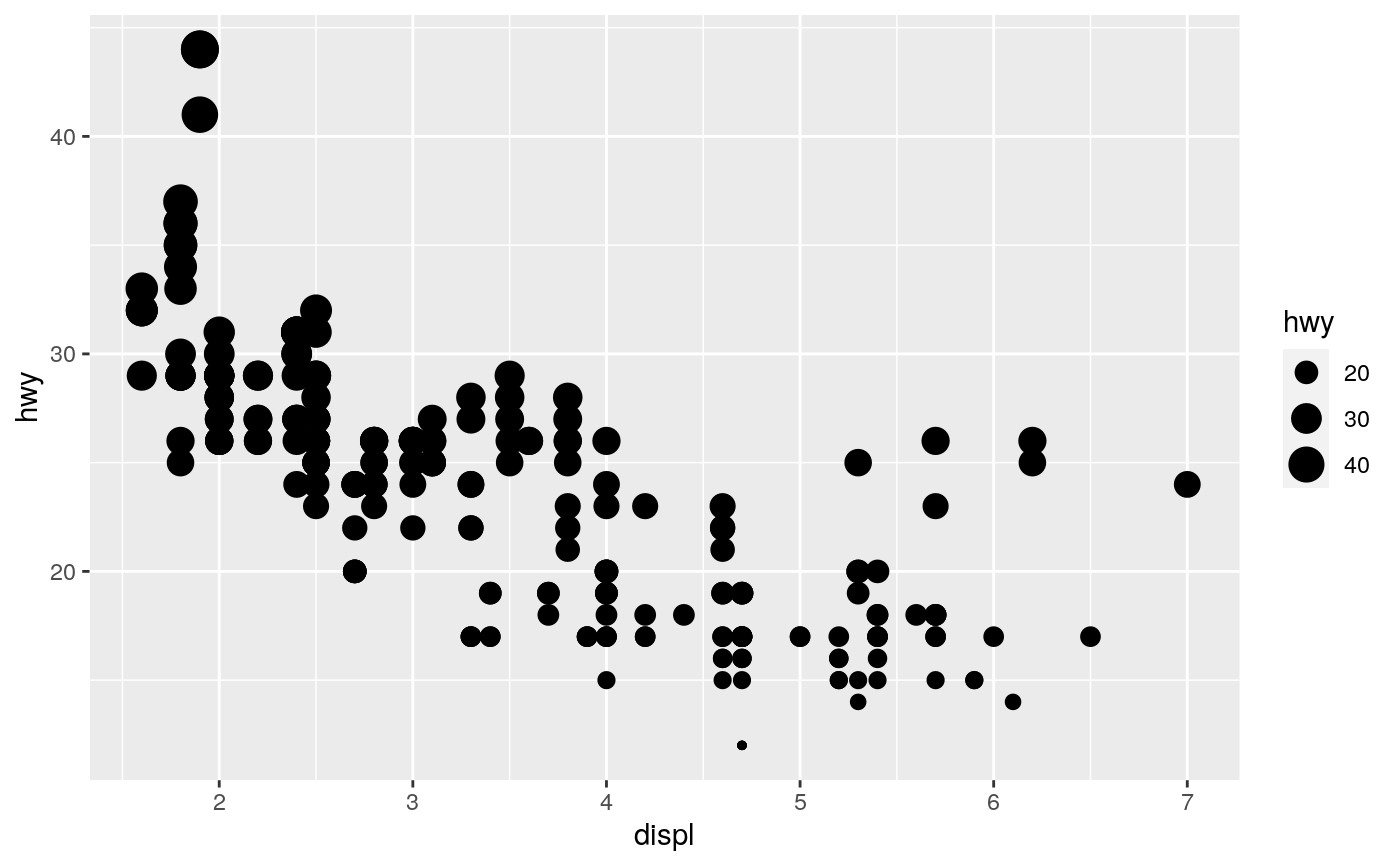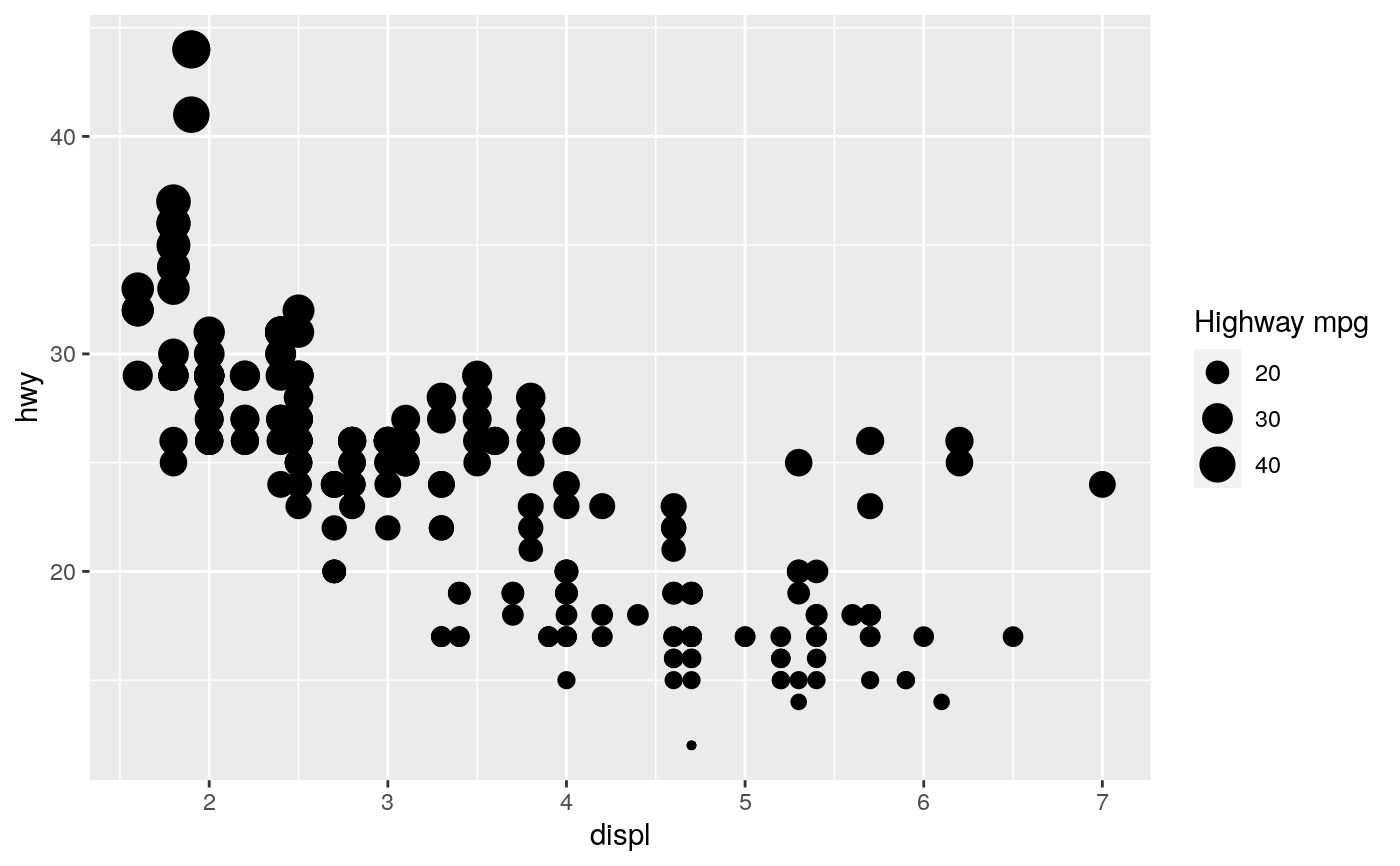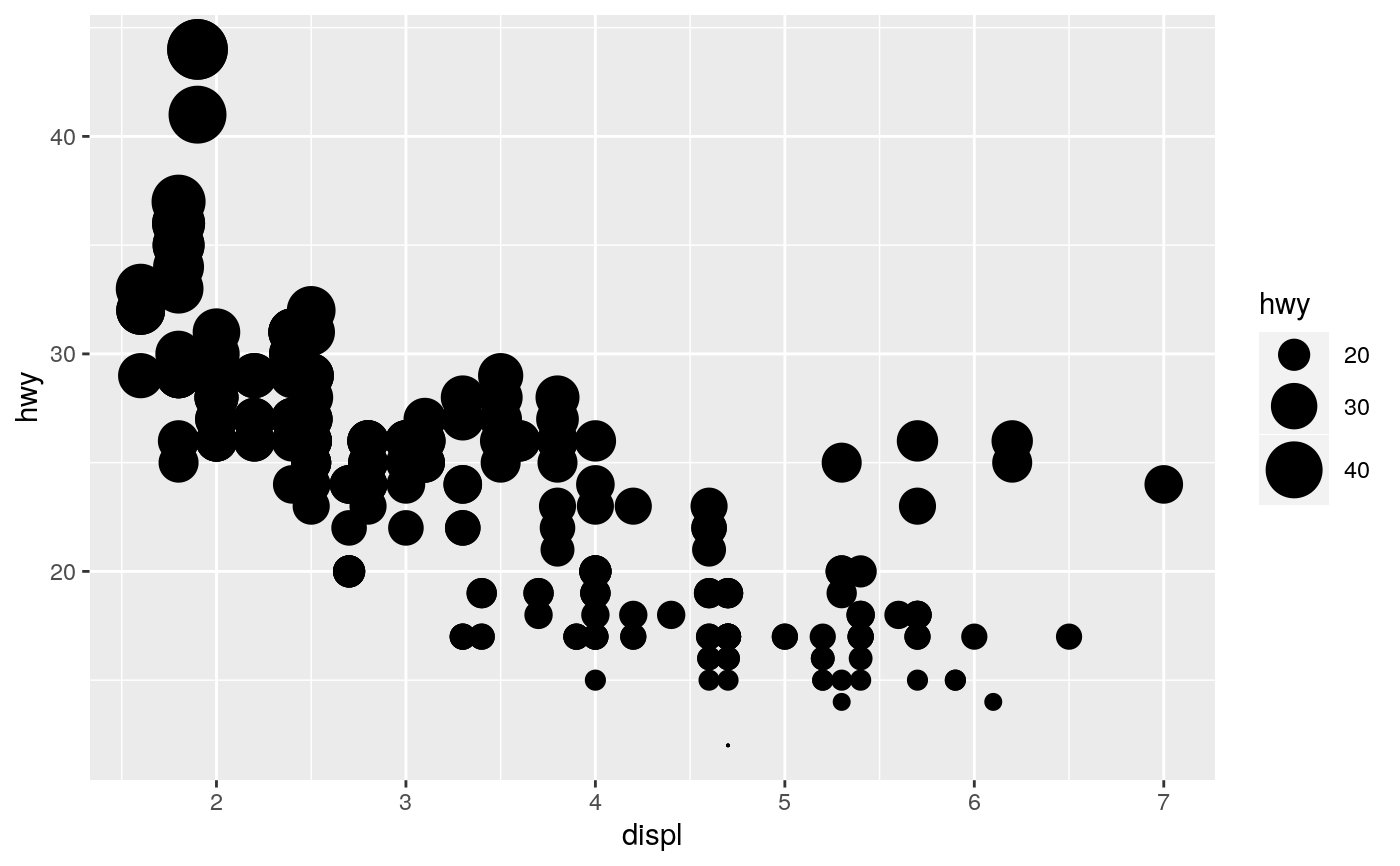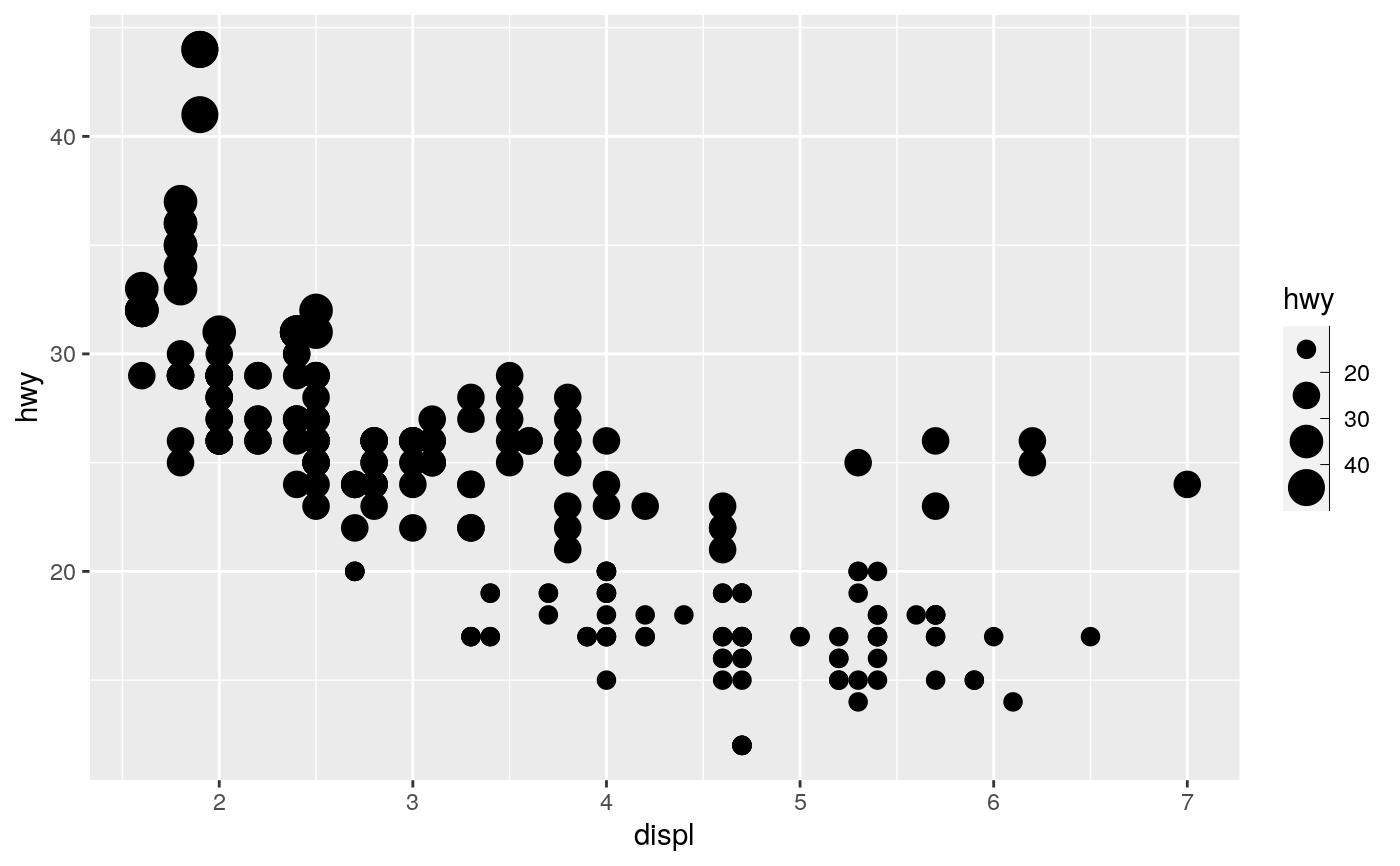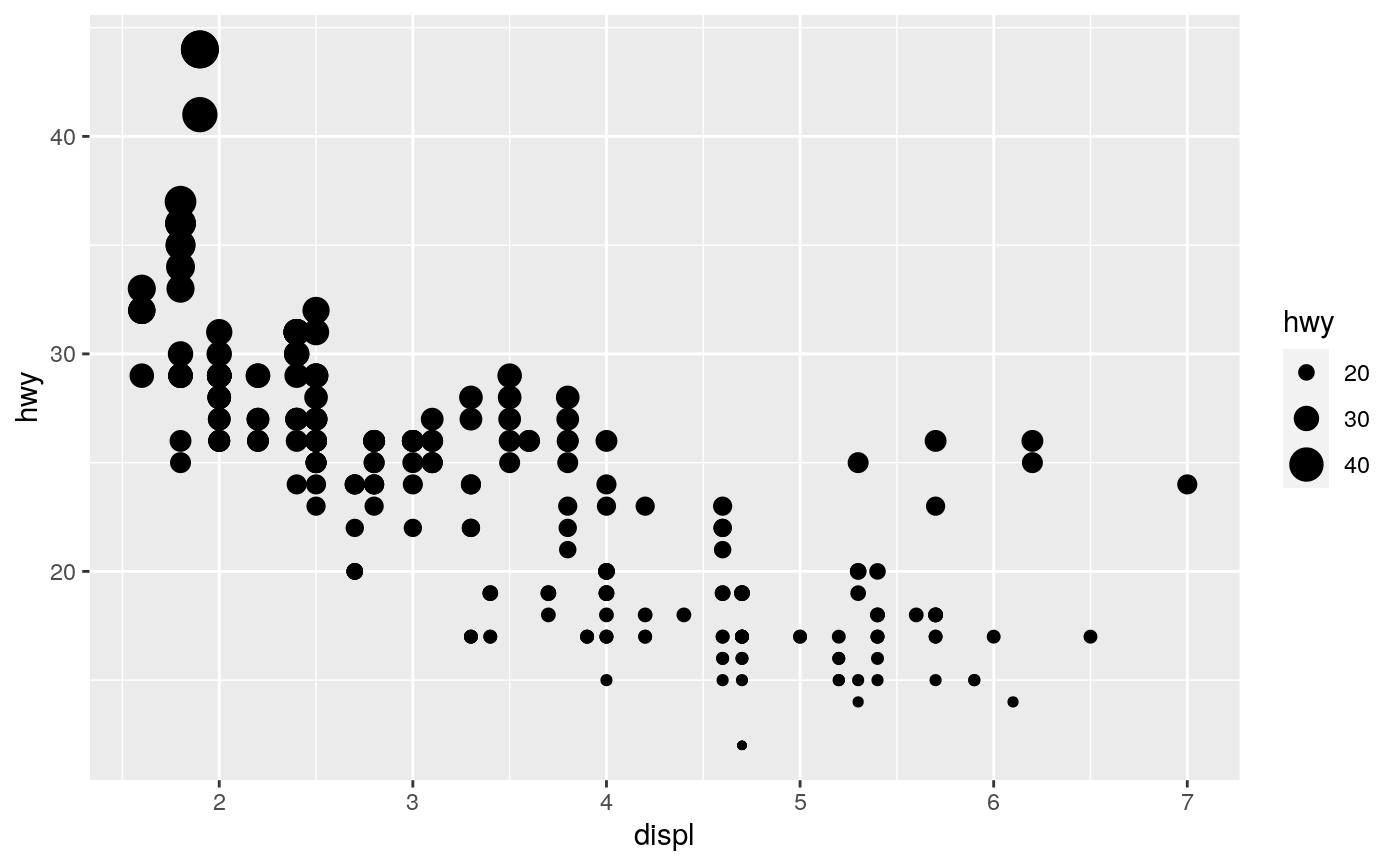scale_size scales area, scale_radius scales radius. The size
aesthetic is most commonly used for points and text, and humans perceive
the area of points (not their radius), so this provides for optimal
perception. scale_size_area ensures that a value of 0 is mapped
to a size of 0. scale_size_binned is a binned version of scale_size that
scales by area (but does not ensure 0 equals an area of zero). For a binned
equivalent of scale_size_area use scale_size_binned_area.
scale_size( name = waiver(), breaks = waiver(), labels = waiver(), limits = NULL, range = c(1, 6), trans = "identity", guide = "legend" ) scale_radius( name = waiver(), breaks = waiver(), labels = waiver(), limits = NULL, range = c(1, 6), trans = "identity", guide = "legend" ) scale_size_binned( name = waiver(), breaks = waiver(), labels = waiver(), limits = NULL, range = c(1, 6), n.breaks = NULL, nice.breaks = TRUE, trans = "identity", guide = "bins" ) scale_size_area(..., max_size = 6) scale_size_binned_area(..., max_size = 6)
Arguments
| name | The name of the scale. Used as the axis or legend title. If
|
|---|---|
| breaks | One of:
|
| labels | One of:
|
| limits | One of:
|
| range | a numeric vector of length 2 that specifies the minimum and maximum size of the plotting symbol after transformation. |
| trans | For continuous scales, the name of a transformation object or the object itself. Built-in transformations include "asn", "atanh", "boxcox", "date", "exp", "hms", "identity", "log", "log10", "log1p", "log2", "logit", "modulus", "probability", "probit", "pseudo_log", "reciprocal", "reverse", "sqrt" and "time". A transformation object bundles together a transform, its inverse,
and methods for generating breaks and labels. Transformation objects
are defined in the scales package, and are called |
| guide | A function used to create a guide or its name. See
|
| n.breaks | An integer guiding the number of major breaks. The algorithm
may choose a slightly different number to ensure nice break labels. Will
only have an effect if |
| nice.breaks | Logical. Should breaks be attempted placed at nice values
instead of exactly evenly spaced between the limits. If |
| ... | Arguments passed on to minor_breaksOne of:
oobOne of:
na.valueMissing values will be replaced with this value. expandFor position scales, a vector of range expansion constants used to add some
padding around the data to ensure that they are placed some distance
away from the axes. Use the convenience function positionFor position scales, The position of the axis.
superThe super class to use for the constructed scale |
| max_size | Size of largest points. |
See also
scale_size_area() if you want 0 values to be mapped
to points with size 0.
Examples
p + scale_size("Highway mpg")# If you want zero value to have zero size, use scale_size_area: p + scale_size_area()# Binning can sometimes make it easier to match the scaled data to the legend p + scale_size_binned()# This is most useful when size is a count ggplot(mpg, aes(class, cyl)) + geom_count() + scale_size_area()# If you want to map size to radius (usually bad idea), use scale_radius p + scale_radius()
